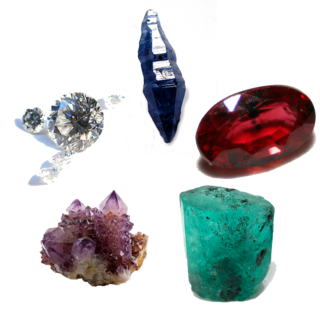
A gemstone is a piece of mineral crystal which, in cut and polished form, is used to make jewelry or other adornments. However, certain rocks and occasionally organic materials that are not minerals are also used for jewelry and are therefore often considered to be gemstones as well. Most gemstones are hard, but some soft minerals are used in jewelry because of their luster or other physical properties that have aesthetic value. Rarity and notoriety are other characteristics that lend value to gemstones.

Spinel is the magnesium/aluminium member of the larger spinel group of minerals. It has the formula MgAl
2O
4 in the cubic crystal system. Its name comes from the Latin word spinella, which means spine in reference to its pointed crystals.
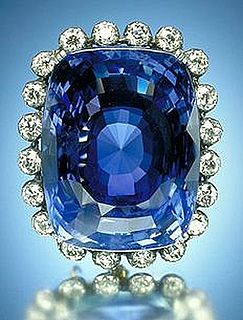
Sapphire is a precious gemstone, a variety of the mineral corundum, consisting of aluminium oxide (α-Al2O3) with trace amounts of elements such as iron, titanium, chromium, vanadium, or magnesium. The name sapphire is derived from the Latin "saphirus" and the Greek "sapheiros", both of which mean blue. It is typically blue, but natural "fancy" sapphires also occur in yellow, purple, orange, and green colors; "parti sapphires" show two or more colors. Red corundum stones also occur, but are called rubies not sapphires. Pink-colored corundum may be classified either as ruby or sapphire depending on locale. Commonly, natural sapphires are cut and polished into gemstones and worn in jewelry. They also may be created synthetically in laboratories for industrial or decorative purposes in large crystal boules. Because of the remarkable hardness of sapphires – 9 on the Mohs scale (the third hardest mineral, after diamond at 10 and moissanite at 9.5) – sapphires are also used in some non-ornamental applications, such as infrared optical components, high-durability windows, wristwatch crystals and movement bearings, and very thin electronic wafers, which are used as the insulating substrates of special-purpose solid-state electronics such as integrated circuits and GaN-based blue LEDs. Sapphire is the birthstone for September and the gem of the 45th anniversary. A sapphire jubilee occurs after 65 years.

Topaz is a silicate mineral of aluminium and fluorine with the chemical formula Al2SiO4(F, OH)2. It is used as a gemstone in jewelry and other adornments. Common topaz in its natural state is colorless, though trace element impurities can make it pale blue or golden brown to yellow orange. Topaz is often treated with heat or radiation to make it a deep blue, reddish-orange, pale green, pink, or purple.
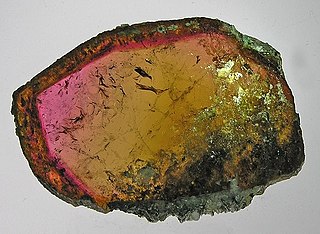
Tourmaline is a crystalline boron silicate mineral compounded with elements such as aluminium, iron, magnesium, sodium, lithium, or potassium. This gemstone can be found in a wide variety of colors.

A ruby is a pink-ish red to blood-red colored gemstone, a variety of the mineral corundum. Ruby is one of the most popular traditional jewelry gems and is very durable. Other varieties of gem-quality corundum are called sapphires. Ruby is one of the traditional cardinal gems, alongside amethyst, sapphire, emerald, and diamond. The word ruby comes from ruber, Latin for red. The color of a ruby is due to the element chromium.

Peridot ( PERR-ih-dot, -doh), sometimes called chrysolite, is gem-quality olivine and a silicate mineral with the formula of (Mg, Fe)2SiO4. As peridot is a magnesium-rich variety of olivine (forsterite), the formula approaches Mg2SiO4. Its green color is dependent on the iron contents within the structure of the gem. Peridot occurs in silica-deficient rocks such as volcanic basalt and pallasitic meteorites. Peridot is one of only two gems observed to be formed not in the Earth’s crust, but in molten rock of the upper mantle. Gem-quality peridot is rare to find on Earth's surface due to its susceptibility to weathering during its movement from deep within the mantle to the surface.

Tanzanite is the blue and violet variety of the mineral zoisite, caused by small amounts of vanadium. Tanzanite belongs to the epidote mineral group. Tanzanite is only found in Tanzania, in a very small mining area near the Mererani Hills.

The Black Prince's Ruby is a large, irregular cabochon red spinel weighing 170 carats (34 g) set in the cross pattée above the Cullinan II diamond at the front of the Imperial State Crown of the United Kingdom. The spinel is one of the oldest parts of the Crown Jewels of the United Kingdom, with a history dating back to the middle of the 14th century. It has been in the possession of England's rulers since it was given in 1367 to its namesake, Edward of Woodstock. The stone is believed to have originated from the Badakhshan mines in present day Afghanistan and Tajikistan, the principal source of large spinel gems in the middle ages.
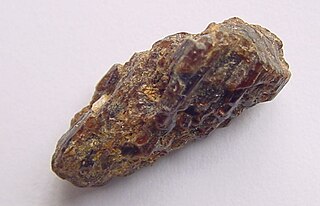
Painite is a very rare borate mineral. It was first found in Myanmar by British mineralogist and gem dealer Arthur C.D. Pain who misidentified it as ruby, until it was discovered as a new gemstone in the 1950s. When it was confirmed as a new mineral species, the mineral was named after him. Due to its rarity, painite can cost in the range of between US$50,000 to $60,000 per carat.
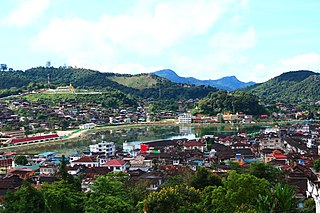
Mogok is a city in the Pyin Oo Lwin District of Mandalay Division of Myanmar, located 200 kilometres (120 mi) north of Mandalay and 148 kilometres (92 mi) north-east of Shwebo.

The value of diamonds as an investment is of significant interest to the general public, because they are expensive gemstones, often purchased in engagement rings, due in part to a successful 20th-century marketing campaign by De Beers. The difficulty of properly assessing the value of an individual gem-quality diamond complicates the situation. The end of the De Beers monopoly and new diamond discoveries in the second half of the 20th century have reduced the resale value of diamonds. Recessions have engendered greater interest in investments that exhibit safe-haven or hedging properties that are uncorrelated to investments in the equities markets. Academic studies have indicated that investments in physical diamonds exhibit greater safe-haven characteristics than investments in diamond indices.
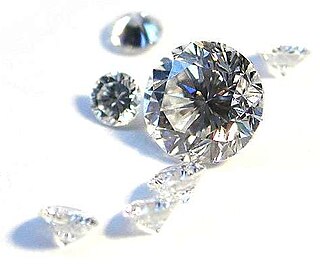
Diamond is one of the best-known and most sought-after gemstones. They have been used as decorative items since ancient times.

Gwebin is a village in Mogok Township, Pyin Oo Lwin District, in the Mandalay Region of central Burma. It is located 16 miles (26 km) west of Mogok. A track connects it to Shwenyaungbin and Mogok.
The Woyie River Diamond was recovered on 6 January 1945 from the Woyie River near Koidu in eastern Sierra Leone. The uncut stone weighed 770 carats (154 g), and at that time it was the largest alluvial diamond ever found, and the third largest diamond discovered in Africa, after the Cullinan Diamond and the Excelsior Diamond. The alluvial Star of Sierra Leone, discovered at the Diminco mine in Sierra Leone in 1970, is larger at 968.9 carats (193.78 g) uncut.

The Sunrise Ruby is the world's most expensive ruby, most expensive coloured gemstone, and most expensive gemstone other than a diamond. Originally mined in Myanmar, its current name is derived from a poem of the same name, written by the 13th-century Sufi poet Rumi.
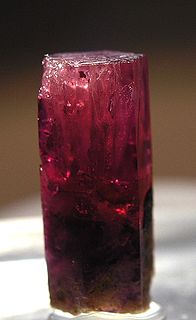
Red beryl, formerly known as bixbite and marketed as red emerald or scarlet emerald, is an extremely rare variety of beryl as well as one of the rarest minerals on Earth. The gem gets its red color from manganese ions embedded inside of beryllium aluminium cyclosilicate crystals. The color of red beryl is stable up to 1000 degrees. Red Beryl can come in various tints like strawberry, bright ruby, cherry, and orange.